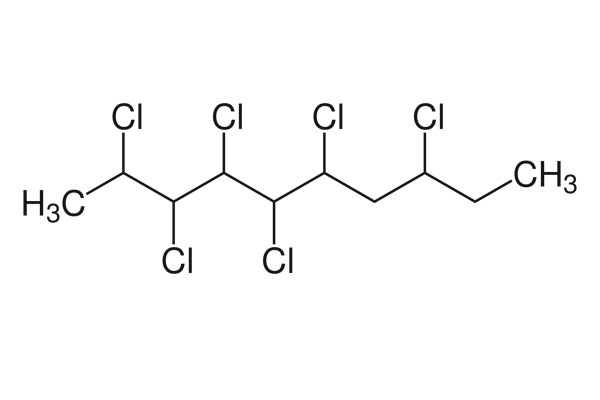Cas No: 85535-85-9
EINESC No: 287-477-0
Molecular weight: (may vary)
Chemical Formula: CXHYClZ
Chemical Structure:
Physical Properties
General Properties: oil-like colorless liquid or solid
Odor:-
Intensity:-
Boiling point:-
Melting point:-
Flash point:-
Vapor pressure:-
Refraction index:-
Solubility :-

General Properties
Chlorinated paraffins are mixtures of polychlorinated n-alkanes. Chlorination amount may vary fom 30% to 70% depending on weight. Length of carbons vary from ten to thirty. They can be found as colorless, yellow-ish liquid or solid.
Chlorinated paraffins’ chemical and physical properties depend on chlorine amount, molecule structure and length of carbon chain. It is produced on different amounts for different industries.
Production
Chlorinated paraffins produced by reaction of ramified paraffin varians and chlorine gas. It is found as mixed with trading product. Complete discomposition is not possible through standard chemical analysis methods.
Applications
Chlorine paraffin 52% is mostly produced for rubber production. It is also used in vinyl and acrylic dye production. It is also used as fire retarder in PVC formulations. It is also used as pressure additive in lubricants and working liquid in metal processings.
Safety Measures and Toxic Values
Chlorinated paraffins are extremely hazardous for humans and environment. It is extremely toxic for underwater organisms and it does not decompose in nature. Therefore, it is cumulated in nature. Also, it is possibly carcinogen for humans. Therefore its usage is restricted by countries worldwide.